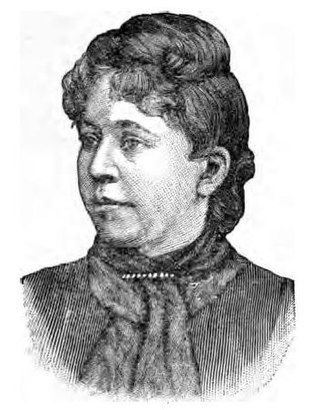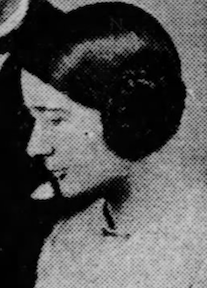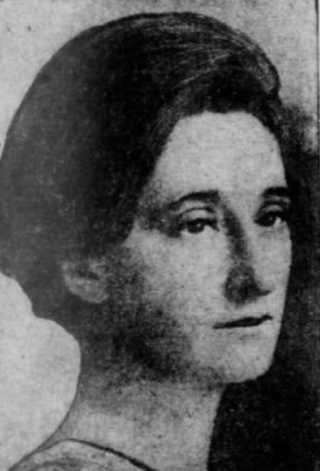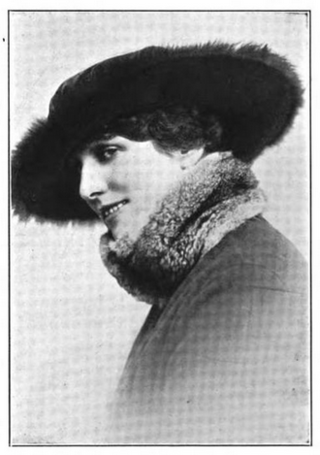First Lady is a 1935 play written by Katharine Dayton and George S. Kaufman. It is a three-act comedy, with three settings and a large cast. There are four scenes, which occur at monthly intervals starting with the December prior to a presidential election year. The story concerns a Washington, D.C. socialite who almost lets her rivalry with another social maven impede her husband's political future. The title is a play on the usual term accorded to a President's wife, suggesting it really belongs to the leading society hostess in the capitol.

Rosalie Slaughter Morton was an American physician, surgeon, and author. In addition to running her own medical practices, she became the first woman appointed as Attending Surgeon at the College of Physicians and Surgeons at Columbia University in 1916, and became the first chairperson of the American Women's Hospitals Service the following year. Morton served as a medic during the First World War, and was the first chair of the Public Health Education Committee. She was also one of the first women to join the faculty, and to later become a professor, at the Polyclinic Hospital of New York.

The Northeastern Federation of Colored Women's Clubs (NFCWC) is an umbrella organization representing black women's clubs in the northeastern United States. The organization was affiliated with the National Association of Colored Women's Clubs (NACWC). It was the first umbrella organization for black women's clubs in the United States, predating the NACWC by a month. The motto of the club is "For God and Humanity".

Mabel Harris Conkling was an American sculptor, and president of the National Association of Women Painters and Sculptors from 1926 to 1928.

Elizabeth Stumm better known by her pen name Mrs. C. C. Stumm (1857-?) was an African-American teacher and journalist. As her husband was involved in missionary service, the couple moved often, but Stumm was able to work as a writer and teacher. She wrote for many newspapers and journals in the black press and was noted by numerous compilers of her day as an influential and effective journalist.

Georgia Mabel DeBaptiste was an African-American journalist, teacher and social worker from Chicago. After completing her education, she taught at various notable black schools before becoming the first woman of African descent to be employed at the Chicago Post Office.

Roberta Johnson Dunbar was an American clubwoman and peace activist based in Rhode Island. Her first name is sometimes written "Reberta" in sources.

Florence Spencer Duryea was an American philanthropist and clubwoman, national secretary of Women's Organizations for Near East Relief, based in New York City.
The Empire State Federation of Women's Clubs (ESFWC) was founded in 1908 and is an umbrella organization for African-American women's groups in New York. The organization worked to help improve the lives of young women and helped care for Harriet Tubman until her death in 1913. The organization was affiliated with the National Association of Colored Women's Clubs, and worked with the NAACP.

Irene Moorman Blackstone was an African-American businesswoman and club member who became active in the fight for women's suffrage. Along with Alva Belmont, she initiated the interracial cooperation of women in the drive for enfranchisement. When the 19th Amendment passed, she turned her activism toward the Universal Negro Improvement Association (UNIA) and other programs which worked to uplift the black community and prevent the exclusion of and discrimination against blacks in attaining socio-economic and political equality.

Emma S. Connor Ransom was an American educator and clubwoman, active in the African Methodist Episcopal Church (AME) and the YWCA.

Caroline Fraser Manice was an American golfer.

Pauline Arnoux MacArthur was an American clubwoman, writer, pianist and librettist.

Violette Clarisse Mège was an Algerian-born French artist, and teacher and wife of artist Michael Baxte.

Ellen Eddy Shaw was an American writer, editor, and teacher on gardening and farming. From 1913 to 1945, she was Curator of Elementary Instruction at the Brooklyn Botanic Garden.

Virginia Norden, born Violet Alice Dalton, was an American actress on stage and in silent films.

Julia Elma Brewster Brick was an American philanthropist. In 1895, she donated land and funds for the creation of the Joseph Keasbey Brick Agricultural, Industrial and Normal School in North Carolina, which served Black students from 1895 to 1933.

Dorcas Brigham was an American botanist, horticulturist, and farmer.
Bertha Lee Turner (1867–1938) was an American caterer, cookbook author, and community leader in Pasadena, California, in the early 1900s. She is most famous for compiling The Federation Cookbook: A Collection of Tested Recipes Compiled by the Colored Women of the State of California.
Maud Wilder Goodwin was an American writer of historical fiction, biographies, and popular histories.
















